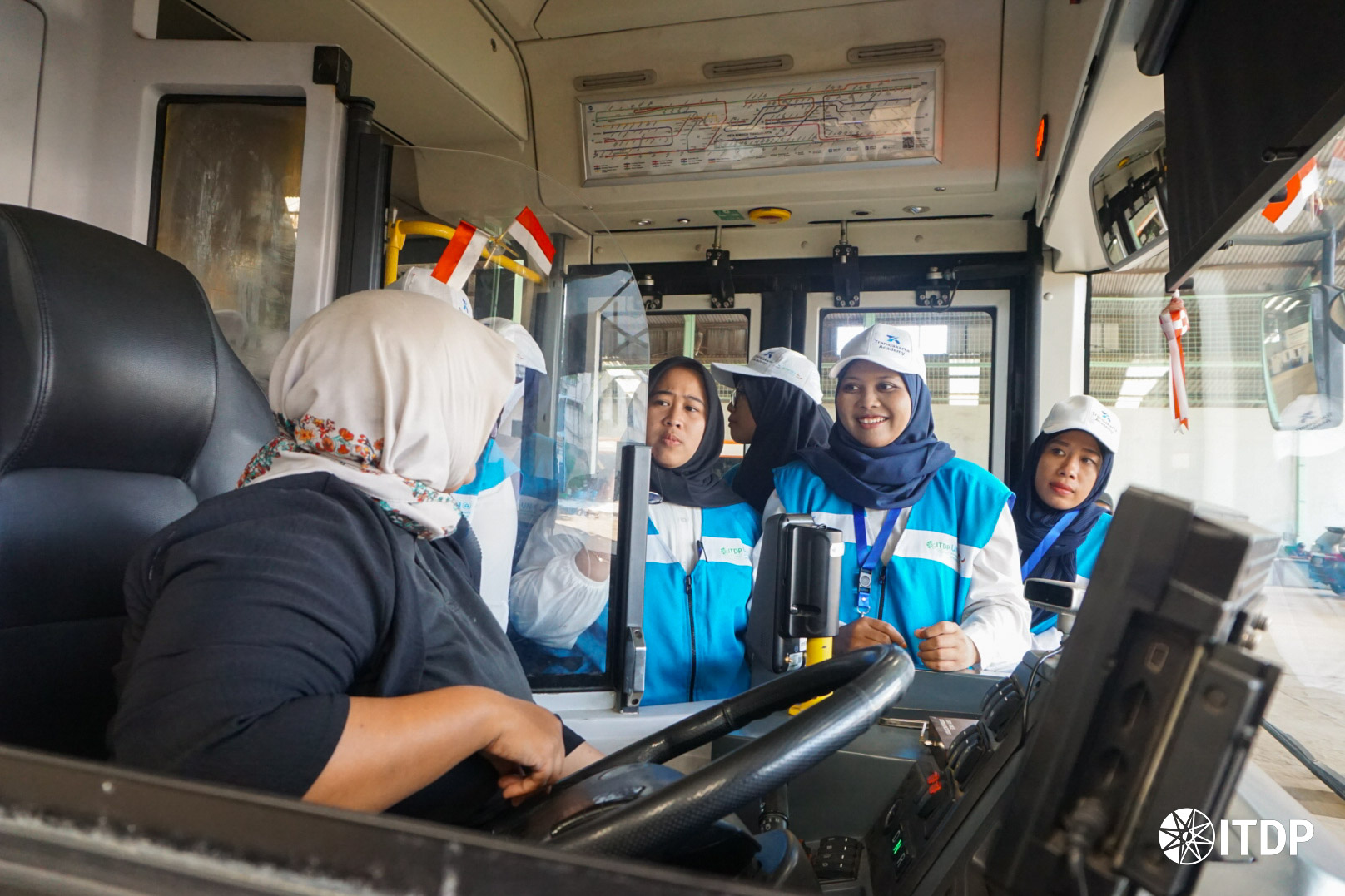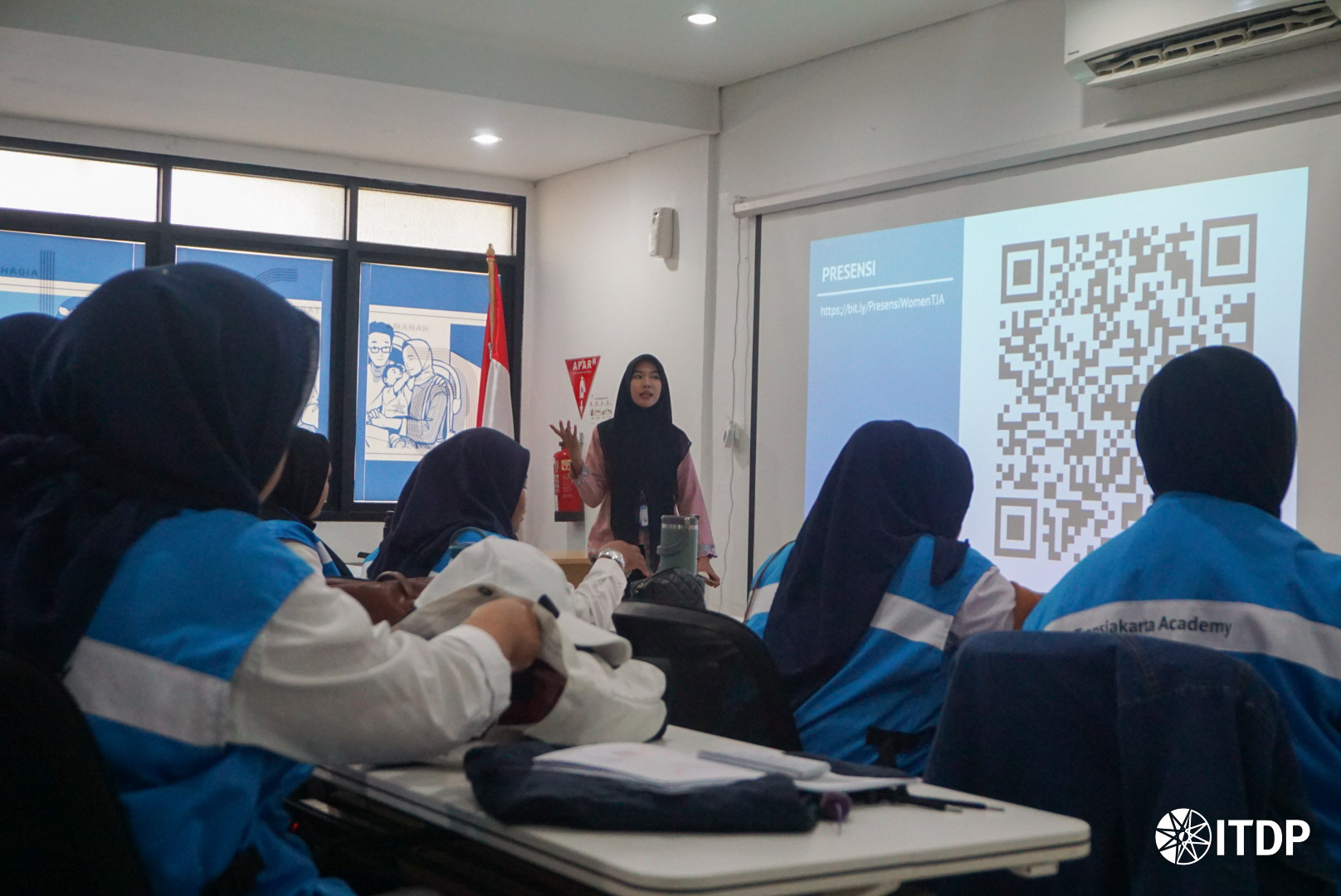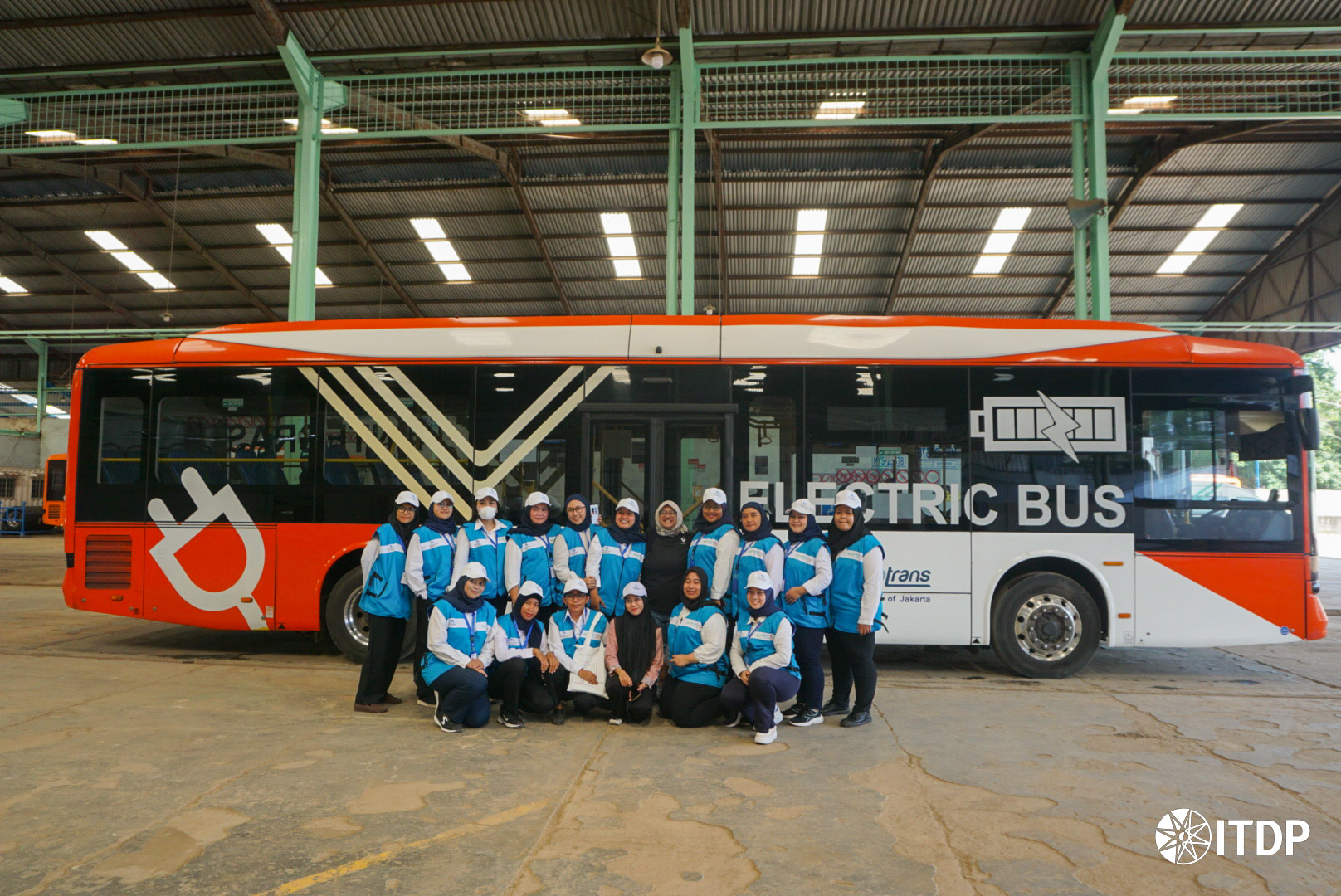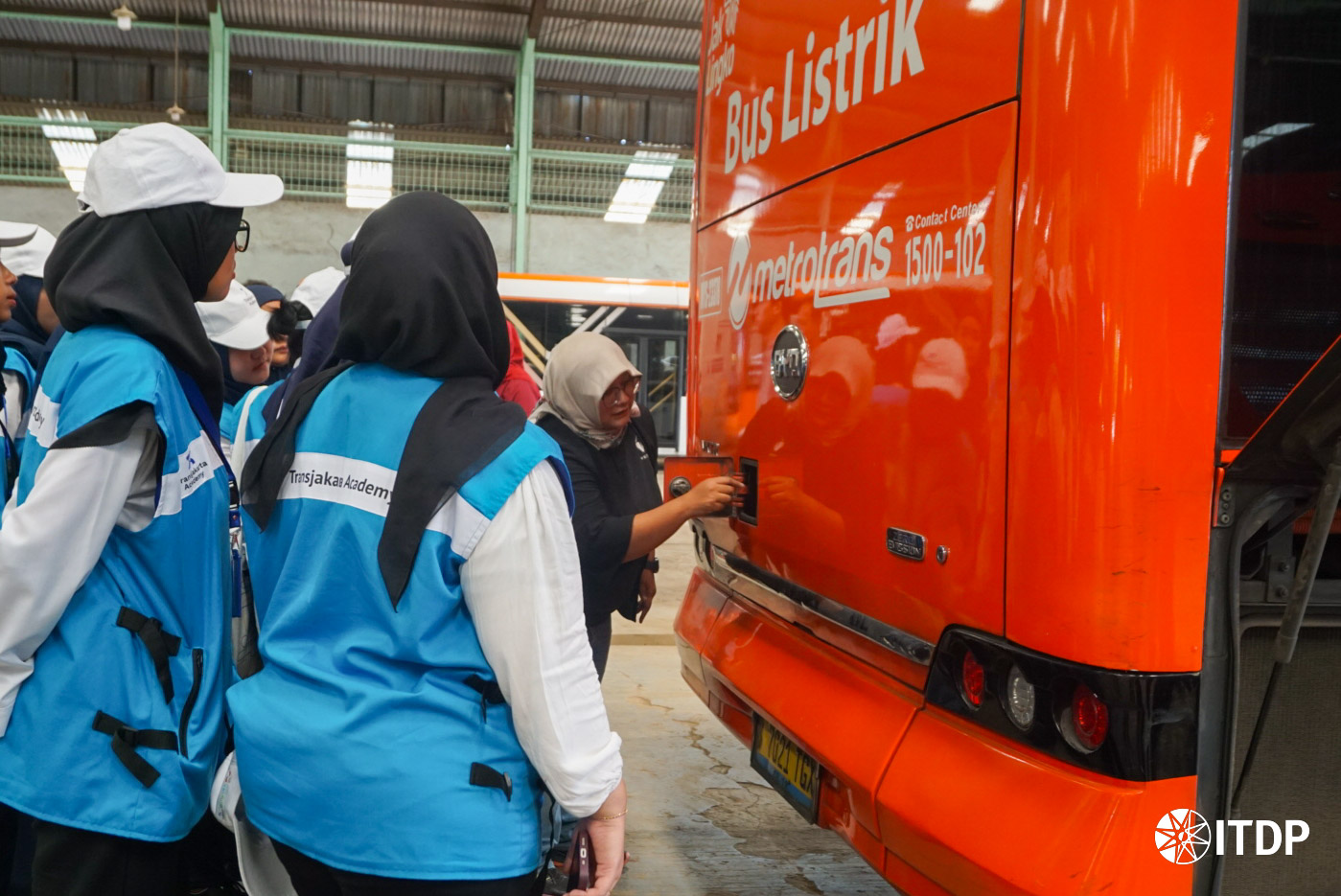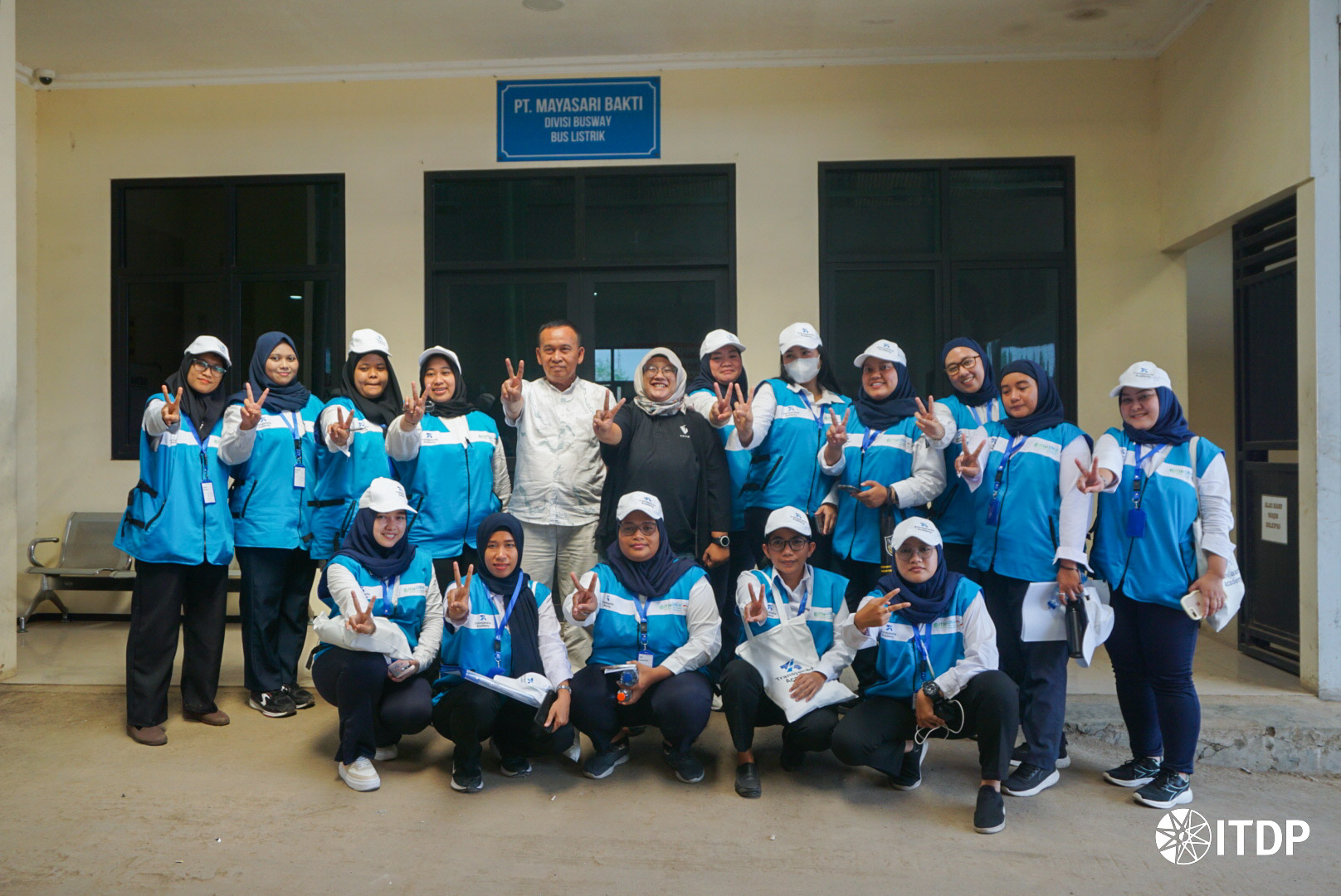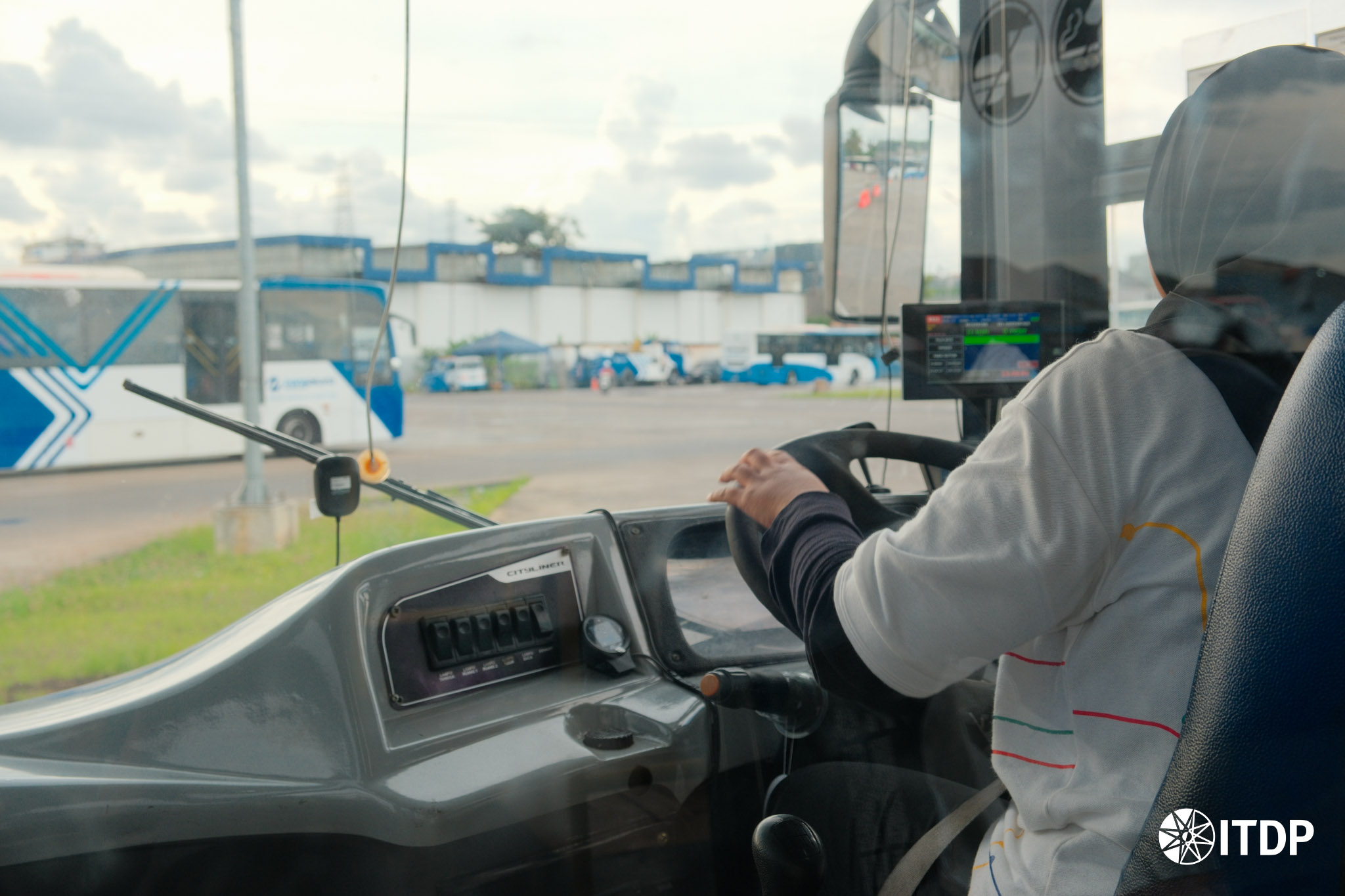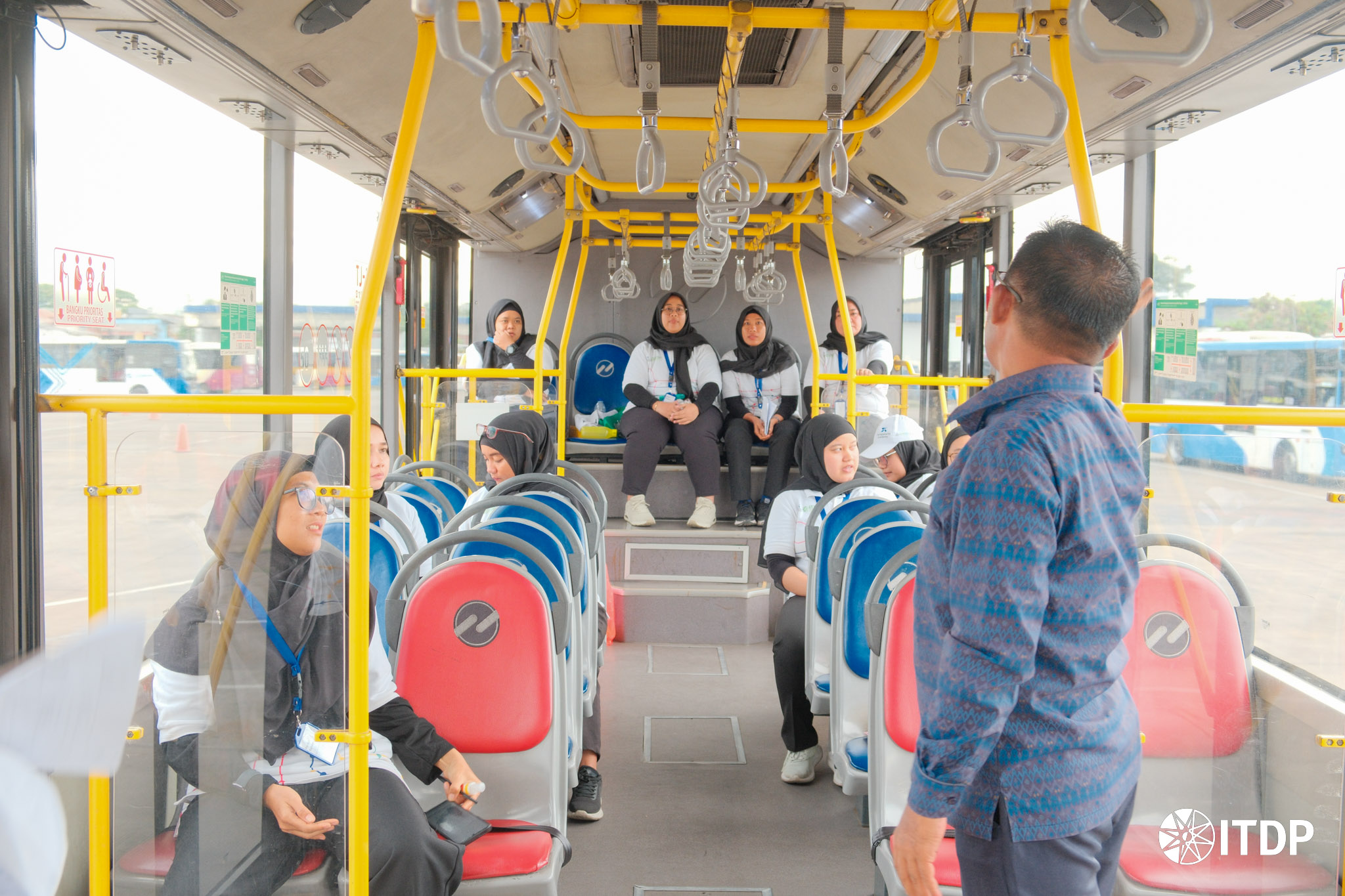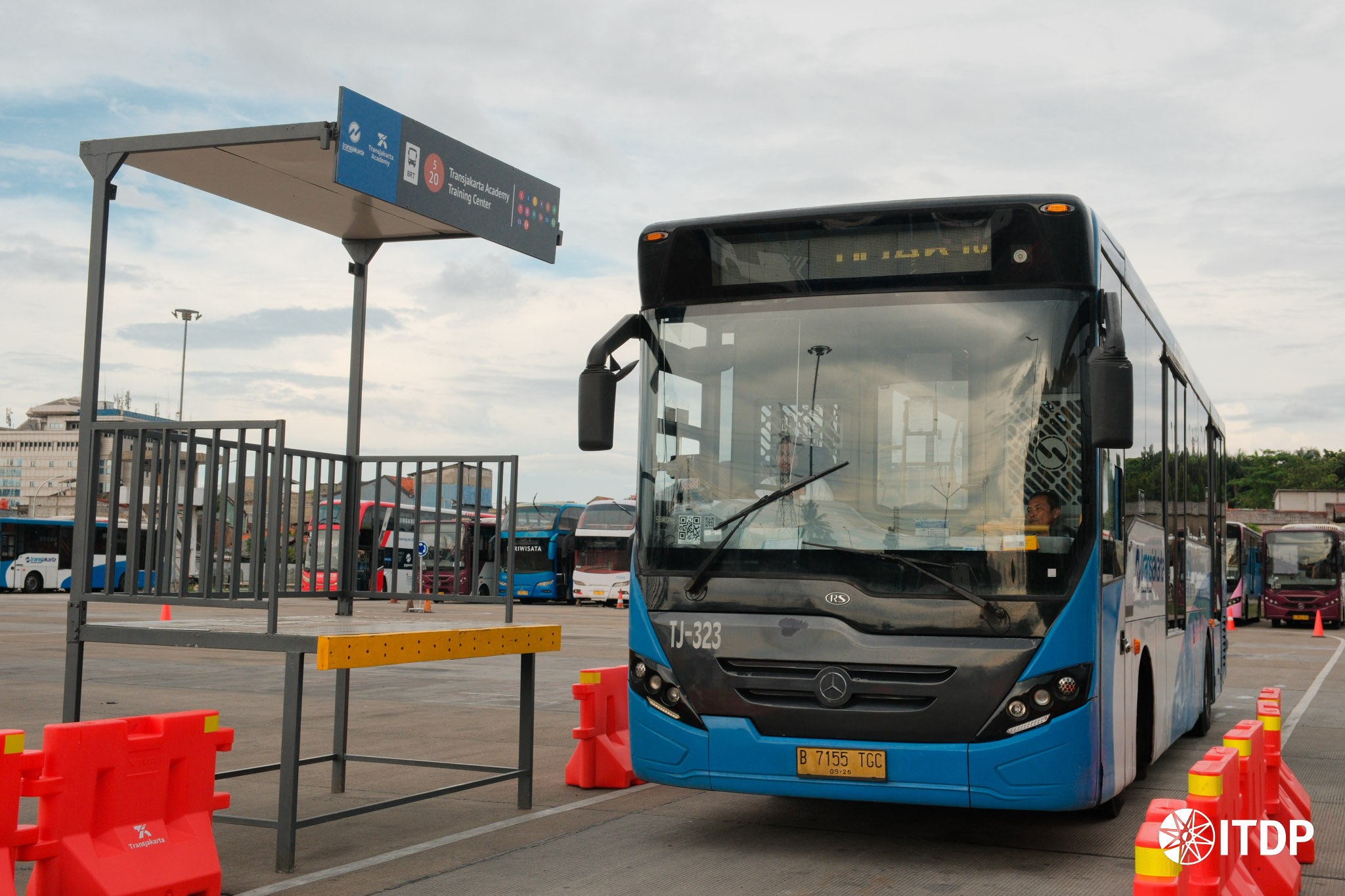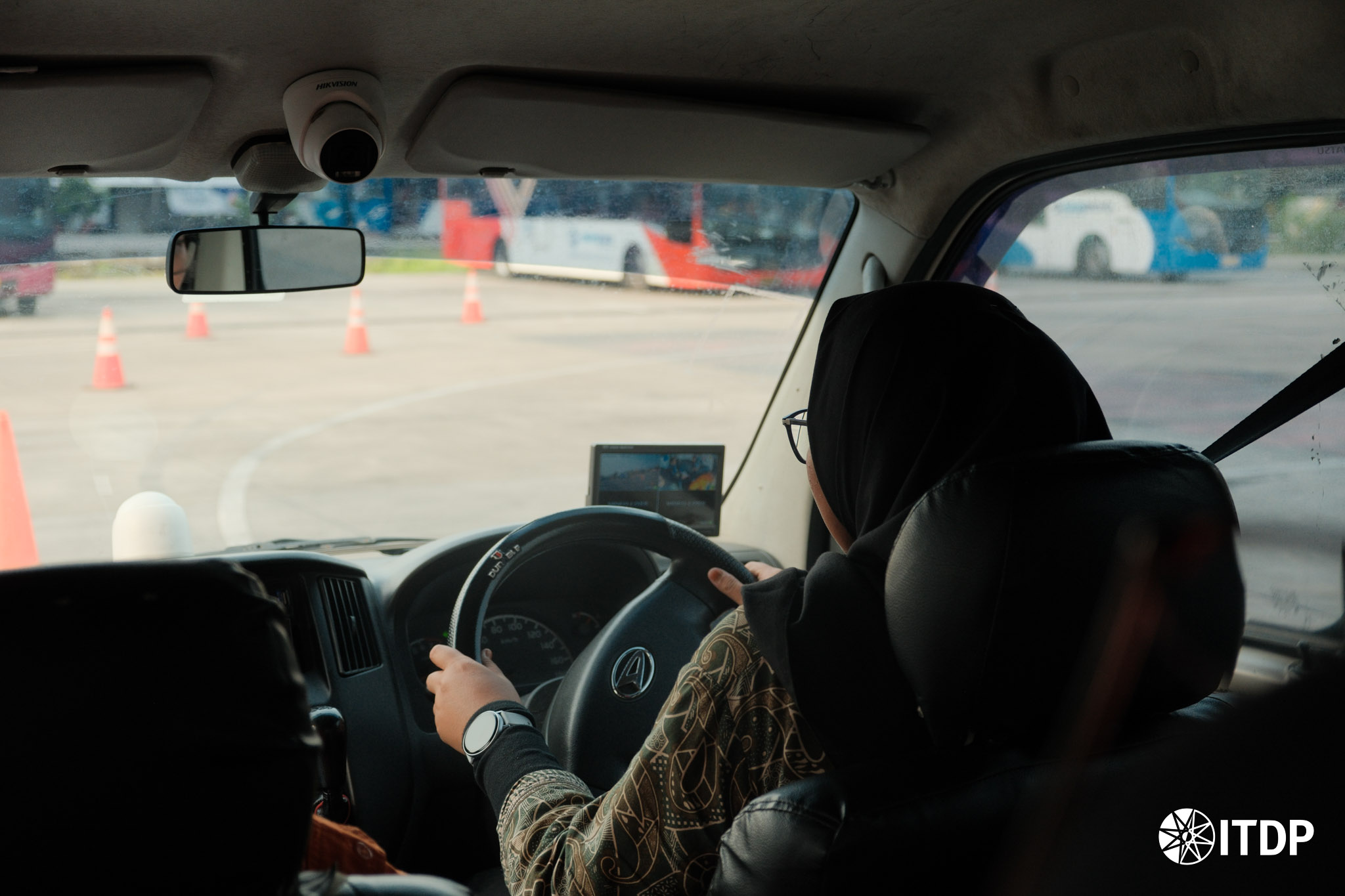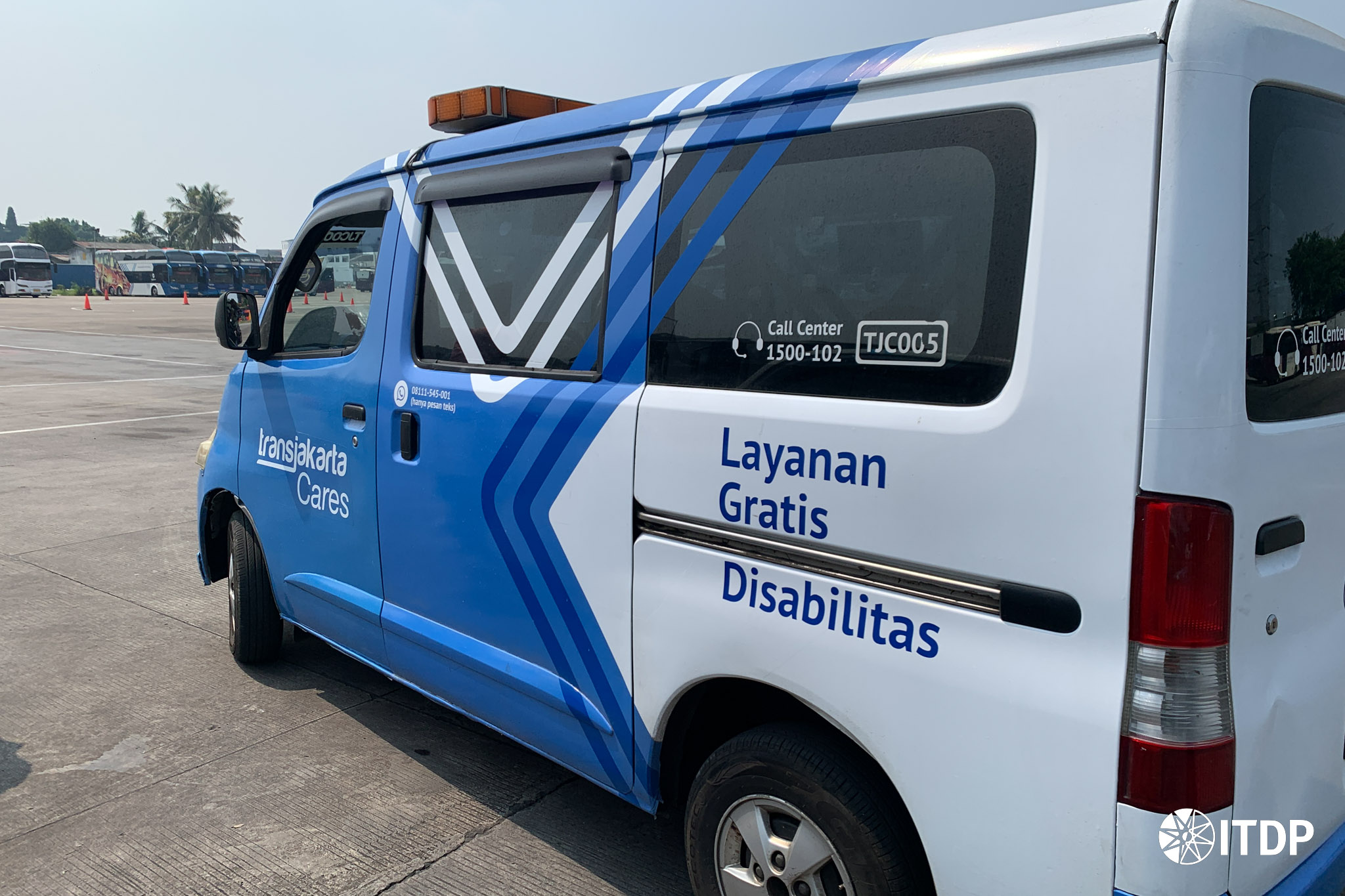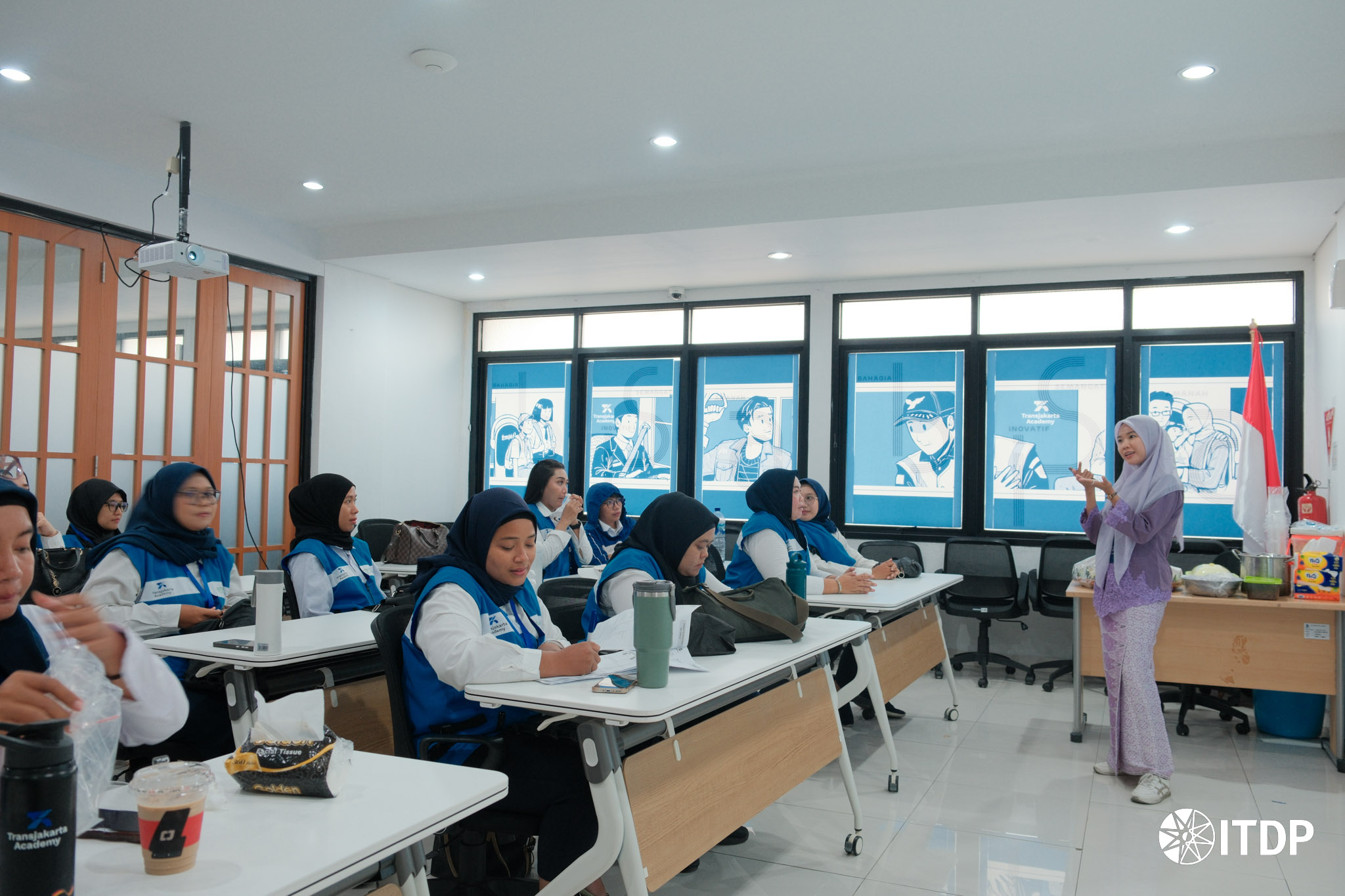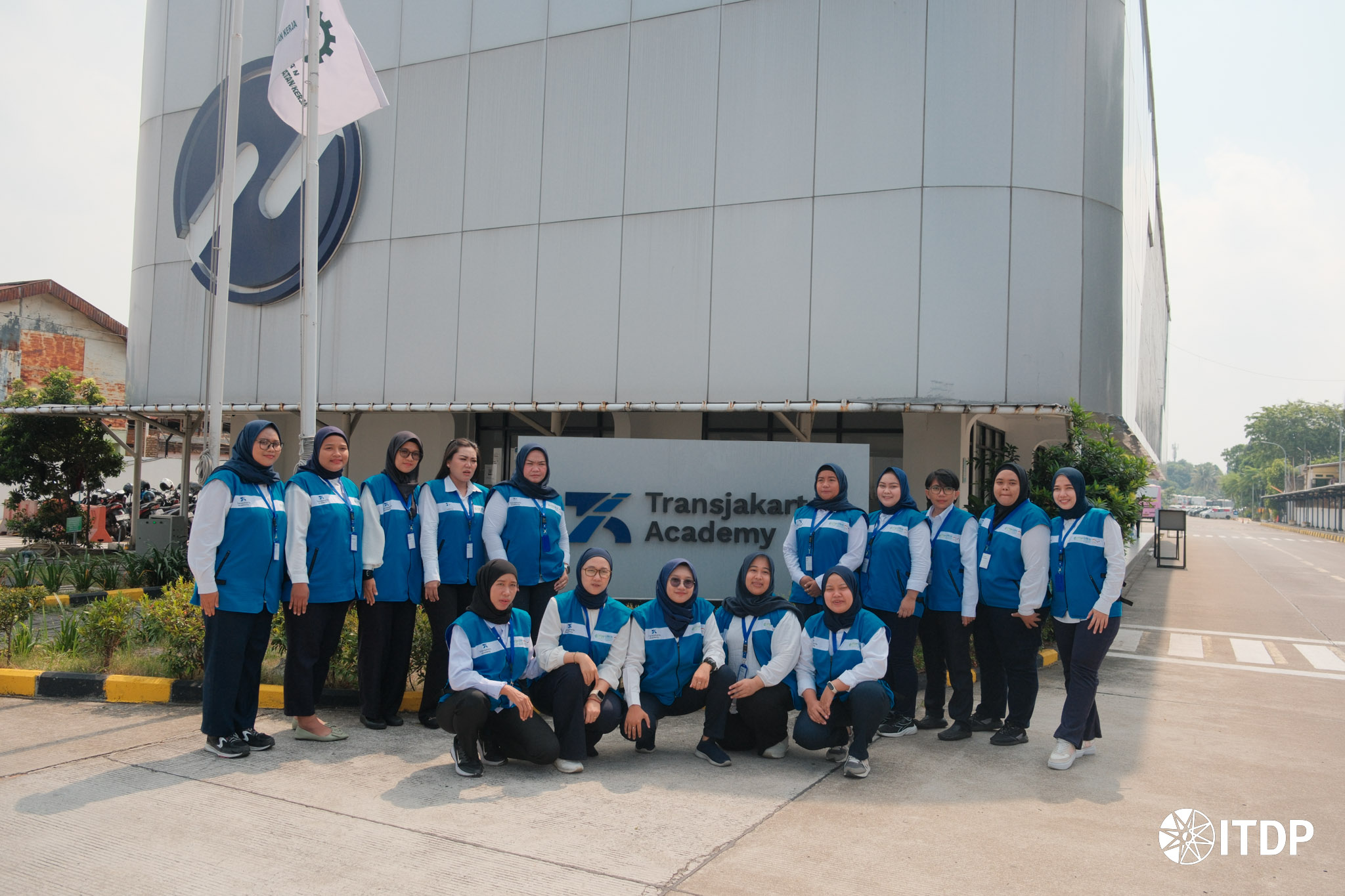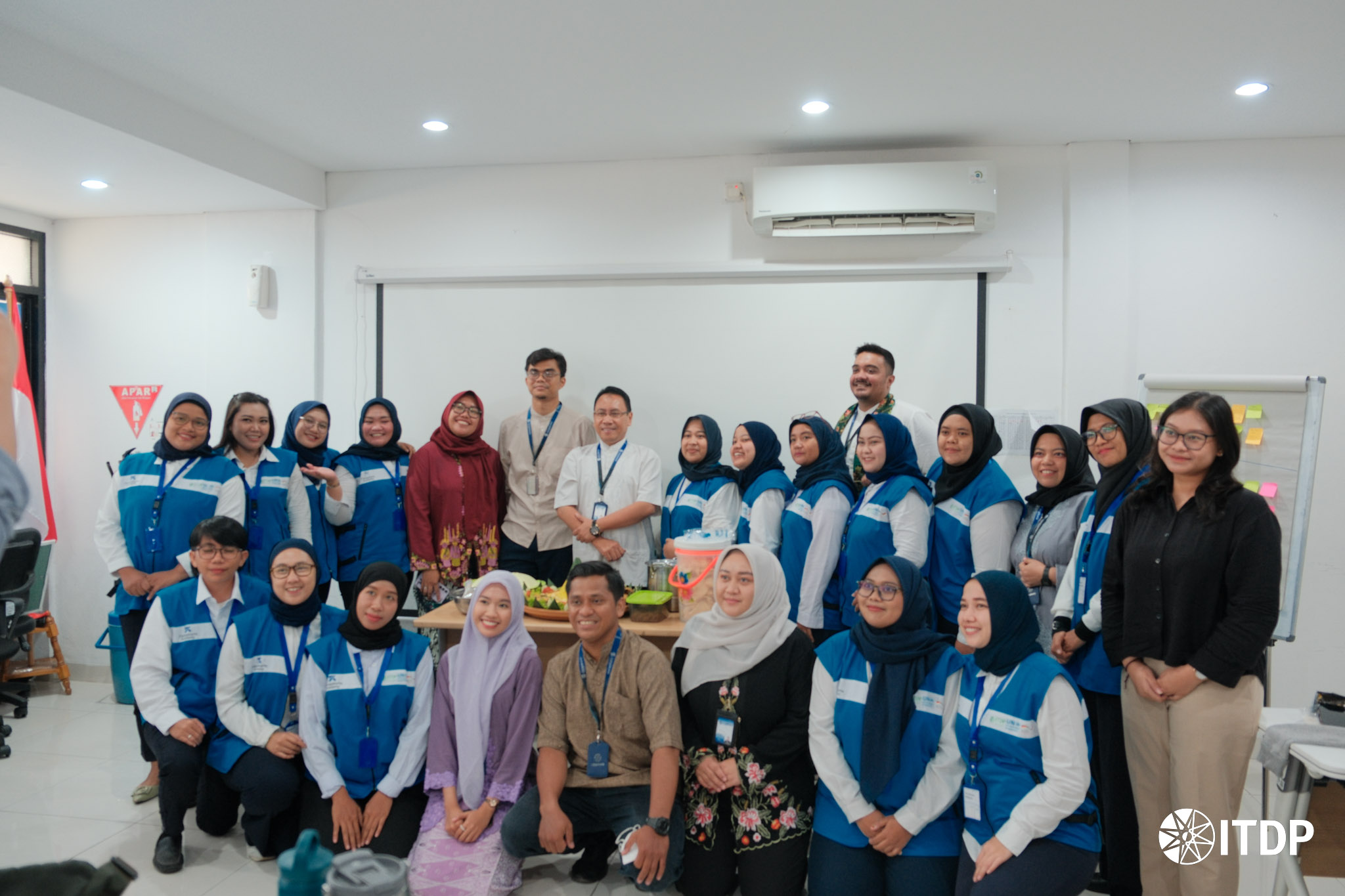November 04, 2025
The Blooming Dream Behind the Transjakarta Wheel
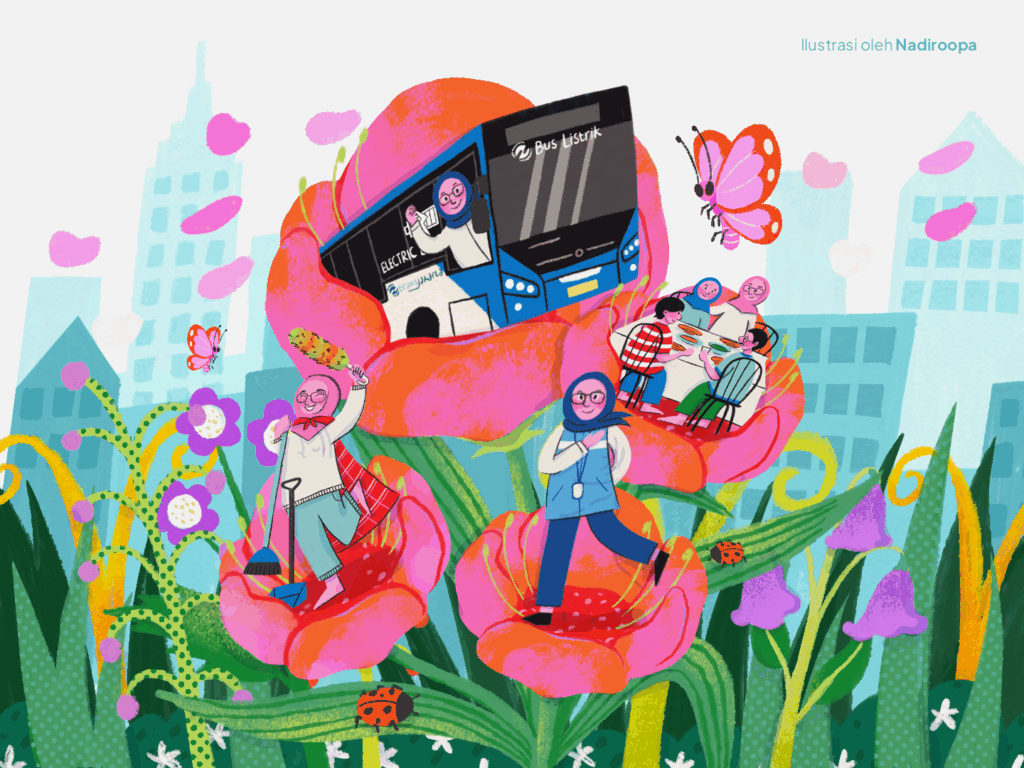
Illustration by Nadiroopa
Hello! My name is Candika Nooraffalia Alfira, but everyone calls me Dika. I’m one of the participants in Transjakarta Academy’s “Women Empowerment” program, supported by UNEP, the German Federal Ministry for Economic Cooperation and Development (BMZ), and ITDP Indonesia. For 23 days, I took part in an intensive training program to chase a dream I never thought possible—to become a Transjakarta bus driver.
While scrolling through X (Twitter) one day, I came across a post from a bus fanbase about Transjakarta Academy’s “Women Empowerment” program, which provided training opportunities for women to become professional bus drivers. The idea immediately captured my attention. I read it repeatedly, feeling a strong sense of calling. After seeking my family’s permission and support, I decided to apply—just days before registration closed. My main motivation was simple: to prove that women are equally capable of working in the field, not only behind desks. We can take the driver’s seat, help passengers reach their destinations safely, and be part of the city’s public transportation system.
A few weeks later, I was invited to take the psychological test and participate in an interview. After going through all the steps and waiting anxiously, the good news finally came—I had been accepted into Transjakarta Academy. That afternoon, I couldn’t stop smiling. I felt overjoyed and excited, because it was a golden opportunity I had never imagined would come my way.
Learning to Become a Bus Driver
The training began with an introduction to PT Transportasi Jakarta, its service standards, and the values every driver should embody. For the first ten days, we focused on classroom sessions—learning about personal branding, safety, and the technical aspects of driving. To be honest, the lessons weren’t easy. Some materials were complex and challenging, but I found myself enjoying the process. Every day, I felt like I was learning something completely new.
One of the most interesting moments was when we visited the Mayasari Bakti depot to learn about electric buses. I had no idea that electric buses had so many advantages—not only are they environmentally friendly because they produce no emissions, but they’re also more efficient and more comfortable for passengers, especially priority passengers.
That day, I realized something important: being a bus driver isn’t only about driving. It’s about contributing to a cleaner, more inclusive city.
After finishing ten days of theory, we began the practical driving sessions, and that’s when the real challenge started. The first time I sat behind the wheel of a bus, it felt massive—like guiding a giant down the road. I learned to control the transmission smoothly, reverse with precision, and master the hardest part: planned braking.
I still remember the first time I braked too hard—everyone inside the bus lurched forward. I felt embarrassed, but I learned from the experience. My instructor, Mr. Supriyanto, patiently demonstrated a new technique: shifting to neutral a little earlier, pressing the brake gently, and letting the bus’s momentum slow it down before applying light pressure to stop completely. The difference was huge—the bus came to a smooth, steady stop. That was the moment I realized I was slowly getting better.
Another challenge was stopping the bus just 10 centimeters from the platform. It might sound simple, but for a vehicle that long, it required precision and instinct. I relied on the road markings and a small side mirror to guide me, making sure the bus lined up perfectly with the platform door. When I finally managed to do it flawlessly, it felt incredible—like I had mastered something that once seemed impossible.
From the Training Ground to the Road
On the sixth day, all trainees participated in the practical driving test at the competency arena. I was assessed by two instructors, Mr. Hisar and Mr. Sumandi. Once the test was completed, we were divided into several units: single bus, service vehicle, and Transcare. I was assigned to the Transcare unit, a special service designed for priority passengers.
To me, this unit carried the same weight of responsibility as any other. I learned to drive with greater care and awareness. During that time, I came to understand that being a bus driver is not only about operating a vehicle, but it’s also about empathy and human connection. A driver isn’t merely someone who takes people from one stop to another; we’re part of every passenger’s journey, even if just for a short while
Challenges at Home
During the training, my daily rhythm changed completely. Normally, I helped my sister take care of the house, but while attending the academy, most of those responsibilities were taken over by my family. During the “bintalsik” (mental and physical training) session, I had to wake up at 3:00 a.m. and leave home by 3:45 a.m. to catch the train before 4:30 a.m., arriving at the academy around 6:00 a.m. Once that session ended, my routine returned to a more regular schedule: waking up at 4:00 a.m., leaving by 4:45 a.m., and catching the KRL commuter train between 5:00–5:50 a.m. to arrive at the academy before 8:00 a.m. My return time was flexible—it depended on which mode of transport I took. The KRL was faster, but if I took the P11 Transjakarta bus, I often arrived home later due to traffic.
Sometimes I felt guilty for not being able to help out as much as I used to. But my family fully supported me throughout the program. Household chores were shared evenly, and my father and sister took over many tasks, including hospital visits for my mother. Through this experience, I learned that I wasn’t fighting alone. My greatest strength came from my family—the people who believe that a woman has every right and courage to dream big.
Even when I was exhausted, I still tried to help in small ways—cooking simple breakfasts, ironing clothes, or buying groceries after training. On rainy days, I often choose to take the Transjakarta P11 instead of the train to stay safe. No matter how small the effort, I wanted to keep contributing at home because my family has always been my greatest source of motivation.
More Than Just Driving
After twenty-three days of training at Transjakarta Academy, I realized that being a bus driver is so much more than holding the steering wheel. It’s about public service, safety, self-discipline, and trust—the trust that passengers place in us every time they step onto the bus.
The training changed me in ways I didn’t expect. I’ve become more mindful, more patient, more aware of the responsibility that comes with every journey. I used to drive however I wanted. Now, I think about distance, rhythm, and timing.nBut beyond the skills, what I gained most was respect. Respect for this profession, and for every person who keeps the city moving one trip at a time.
My hope is simple: that programs like Transjakarta Academy – Women Empowerment will continue to grow and open doors for more women. Because a bus driver isn’t just a driver. We are public servants, faces of this city, and part of a movement toward more inclusive, human mobility.
To my fellow women who might be reading this: don’t be afraid to try something new. The challenges will be there, but with the guidance of the patient and passionate instructors at Transjakarta Academy, you’ll discover that learning here isn’t just about driving—it’s about believing in yourself.
Because behind the wheel of a bus, I’m not only taking passengers to their destinations—I’m also driving my own dream toward reality.
*Women’s participation in Indonesia’s electric vehicle ecosystem is still very limited—only 1% of Transjakarta’s staff were women in 2021 (ITDP–UNEP, 2024). This is a striking contrast to Transjakarta’s ambitious plan to operate 10,047 electric buses by 2030. To help close this gap, ITDP and Transjakarta established the Transjakarta Academy (TJA)—a training institution created to prepare new drivers and open more opportunities for women to join the industry.
The second batch of TJA was designed specifically for women. It served as a testing ground for new classroom designs, teaching methods, and policies that foster an inclusive and supportive work environment. The updated curriculum also strengthened topics on gender mainstreaming and the prevention of gender-based violence, with support from UN Women Indonesia and Kalyanamitra.
Looking ahead, TJA aims to become the national BRT driver training center, paving the way for more women to build careers in sustainable and equitable public transportation.

